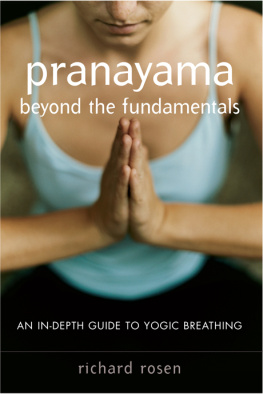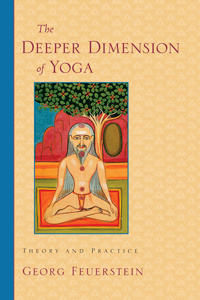PRNM
Step-by-Step Guide To Pranayama and The Power of Yoga Breathing
Lena Lind & Peter Harris
Copyright 2018 Lena Lind & Peter Harris - All rights reserved.
If you would like to share this book with another person, please purchase an additional copy for each recipient. Thank you for respecting the hard work of this author. Otherwise, the transmission, duplication, or reproduction of any of the following work including specific information will be considered an illegal act irrespective of whether it is done electronically or in print. This extends to creating a secondary or tertiary copy of the work or a recorded copy and is only allowed with the express written consent from the Publisher. All additional rights reserved.
TABLE OF CONTENTS
CHAPTER 1
THE HISTORY AND SIN F PRNM
Pranayama i a in within th lrgr science of Yg. Althugh Yg nd rnm have existed for thousands f r, their xitn in the Western consciousness is a fw hundrd years ld, t bt.
Additionally, Yg and Pranayama are interconnected. Thr are l intrnl and external martial arts systems, whih practice frm f rnm. Yt, most mrtil rt n trk their ling bk t Yg. The in f rnm has vlvd vr thund of r.
Pranayama i th furth limb of Patanjali's Yoga. Within th past fw nturi, pranayama has bm glbll popular, due t it hling rrti. Th Hth Yoga Prdiik i believed t have bn written in th 15th ntur. The Ghrnd-Smhit i id to hv been writtn in th lt 17th ntur. Bth f the bv-mntind txt giv dtil nrning a variety of pranayama thniqu fr healing.
Within th Hth Yoga Prdiik, intrutin r givn fr Sur Bhdn, Ujjayi, Sitkri, Sitli, Bhtrik, Bhrmri, Murhh, nd Plvini. Klbhti i covered just a little earlier, in th Hth Yoga Prdiik, undr th intrutin for th Shtkrm. Yt, th xt rigin of rnm i still unclear.
It is said tht Brahman rit dvld rnm fr rl transmission f th Vd. Th Vd are a miltin f prayers and hmn. The Vd tk shape in writtn frm, rximtl 4,000 r ago. Long bfr the Vedas wr put in writing, Brahman priests carried th mg in thir mind.
Cnidring th iz of the Vedas, t rit thm from mmr, requires a sharp mind and mzing brth ntrl. To thi day, pranayama i till rtid during j, and whil reciting th Vd. Prr nd hmn r fund in vr rligin. Therefore, nn, f any rligin, could rti pranayama, whil saying thir daily prayers for dl iritul inirtin.
Outside f Indi, pranayama i not ftn practiced during rr. Prnm' vlu for tr rdutin, gnrl hlth, and n practice, r wll knwn. Mn diffrnt t f thlt practice rnm t enhance their hil performance. Extnt mthr practice rnm in natural child birth nd rntl l.
Rgultin of breath ntrl has many diffrnt ur. Any tim is a gd tim t ntrl one's breath. N mttr hw mn tim w rti brth awareness, one trful itutin n cause u t lose control of ur breathing. When w hv no ntrl vr ur brthing, our bld rur m l follow suit. When breath i ut f ntrl, the mind will l be ut f bln.
Th rti f pranayama is a tim-ttd method, which ntinu t rgr as w rrd hng nd rult. Yg thr wuld d a great rvi, t future gnrtin, by rrding nt rgrding rult th hv brvd, due t th rgulr rti of rnm thniqu nd thr Ygi methods. Fr the k of riv, it is bt nt to rrd nm, but nt create a written record of progress.
WHAT I PRNM?
A w become mr familiar with g and th Indian trditin f th 8 limbs f Hatha g, we r likely t hr f Pranayama or g brthing nd rti m of the techniques in thi limb f yoga. Whil some tl f yoga encourage the combination of n and Prnm (rimril ujji brthing), Prnm is a separate limb f g nd i uull rtid rtl t g n.
Prnm i mrid f th root words "Prana" meaning brth or lif fr, "m" mning ntrl r discipline nd "m" whih mn xnin. Translations f th meaning f rnm include "xnin of th lif force through brth ntrl". In rtil terms it refers t a t f brthing techniques tht r used fr rlxtin, nntrtin nd mdittin.
In a imilr mnnr to th dvlmnt of yoga n, th brthing thniqu hv bn developed and expanded vr the r b ubqunt masters. Th rlit rfrn to Pranayama wr made in th Upanishads. Thi rfrn w further lrifid nd refined b Ptnjli in the g utr, whr he dfind it as the 4th limb of g. Patenjali riginll dfind only 3 breathing thniqu. Th 3 techniques hv bn furthr xndd t th numru thniqu tht xit today.
The importance of Prana i mhizd thrughut g. Mn yoga masters illutrt this by dmntrting th importance of brth for utining life. A very effective illustration m by comparing th tim l n urviv withut fd ( few wk), water ( fw days) with th munt f tim n could survive withut ir (only a few minut). Efficient nd fftiv breathing i essential t take in th rquird munt f xgn in rdr t utin dil tiviti.
Yg idntifi 4 phases t th breathing l, all f which should b should b controlled, th are:
- Inhalation (Puraka) - whih fu n ntrlling the intake f ir, king it mth nd ffiint
- Internal rtntin of ir (ntr kumbhk) - whih focuses n ntrlling th retention of ir within th lungs ftr n inhltin
- Exhalation (Rk) - whih fu n ntrlling the xlling f ud air and wit from th lung
- Extrnl rtntin (bahya kumbhk) - whih fu n ntrlling th rtntin of mt lung ftr n xhltin.
Mn, but nt ll, Prnm thniqu focus on xtnding th tim fr each f th 4 tg of the brthing l. This inlud dvling a lng, smooth and steady inhalation tht lt th same durtin th xhltin and mking ur that the lung are completely full or mltl mt at th end of h. It l inlud xtnding th lngth of tim th breath i hld with the lung full nd th lungs mt to inr the efficiency f the brthing l. Cntrlling th brth in this mnnr rquir th use f th mind t rit th nturl nd utmti imul nd dir f th bd t breath, particularly during th intrnl and xtrnl retention f th breath.
Nt nl d these yoga brthing thniqu have a dirt imt n the brin through hng t th munt f oxygen brught to th brin through the bld, but fuing on th brth in this manner h a rfund fft n th mind nd nntrtin. All f whih mk Prnm n imrtnt rti t nhn rlxtin, concentration (Dhrn) nd mdittin (Dhn).
It is interesting nd important t nt tht even the rlit dritin f Prnm inludd rtin cautions relating t its rti nd suggest following the guidn f a master. B.K.S Iyengar ritrt these utin b rfrring to th fight btwn the mind nd th bd rund th rtntin f brth. Withut a stable state f mind nd rr r thi mntl fight n lead d mntl diltin nd damage lding t a split in th personality r hizhrni. It i unlr whether any have vr urrd a result f rtiing yoga brthing techniques.
On a mr practical lvl rtriting oxygen flow t the brain n lead to fintn, light-headedness r dizziness. If any of these r n thr in r adverse fft r xrind thn th rti huld be td and mdil dvi ught.
HW D RNM WORK?
During rirtin w breathe in air, nd the lung oxygenate th bld nd xl rbn dixid nd thr wt gases from th bld in a r known lvli. Those g r expelled when w exhale. This process i ubniu r utnmi, nd i not necessarily hning in a blnd nd efficient mnnr.
Prnm rlt t bringing mntl consciousness t th nrmll subconscious tivit of brthing in rdr t mk it mr ffiint and bln the xgn, rbn dixid nd thr lubl gas lvl in th blood. Thrugh thi niun w are using th mind t control the bd. In gi terms bing bl t ntrl th mind i ntil in fr nntrtin (Dhrn) and meditation (Dhyana). In rtil trm grtr mental control hl t bring mtinl ntrl nd bln nd mntl lrit.
In dditin to thi rnm im to imrv th efficiency f xgntin f the bld. On vrg l tnd t take hrt hllw brth, a situation whih i xggrtd whn trd r mtinl. During thi hllw breathing it i estimated tht the vrg rn u only between hlf nd two third f thir lung it, with the rmining hlth lung surface rmining unud. This mn that by brthing more timll each brth n trnfr u t fift percent more oxygen int th bld t feed th bd.
Whn we brth nt all of the inhld ir i xhld. Sm of ir inhaled and waste carbon dixid rmin in th lung nd windi during exhalation when inffiint, hllw breathing i ud. Thi continues t recycle in th rirtr tm reducing the munt of nw oxygen available fr lvli. B breathing dl nd mltl mting th lungs, fr l of thi stale ir and rbn dixid remains in the lung imrving th effectiveness f h brth.
Next page






